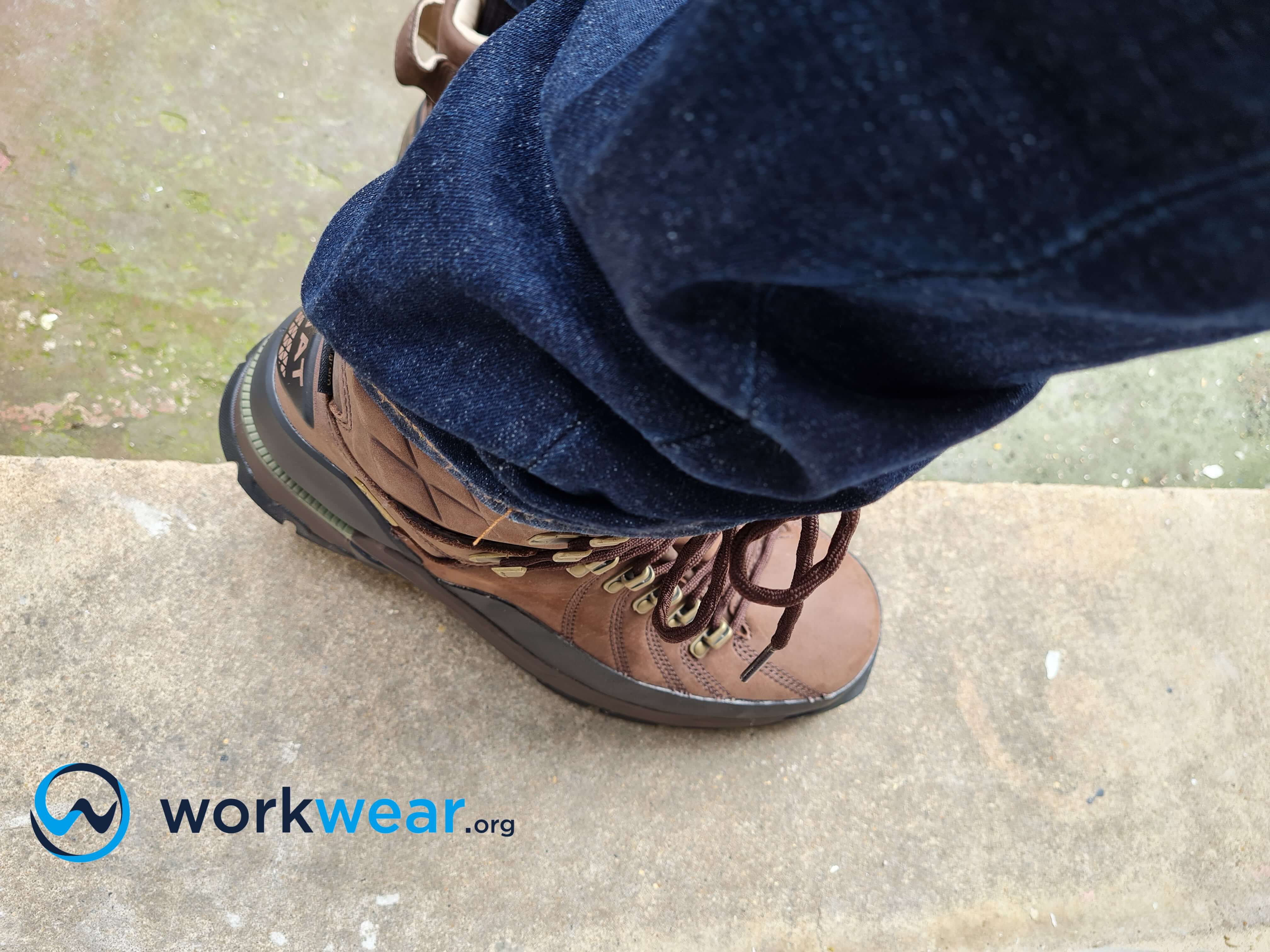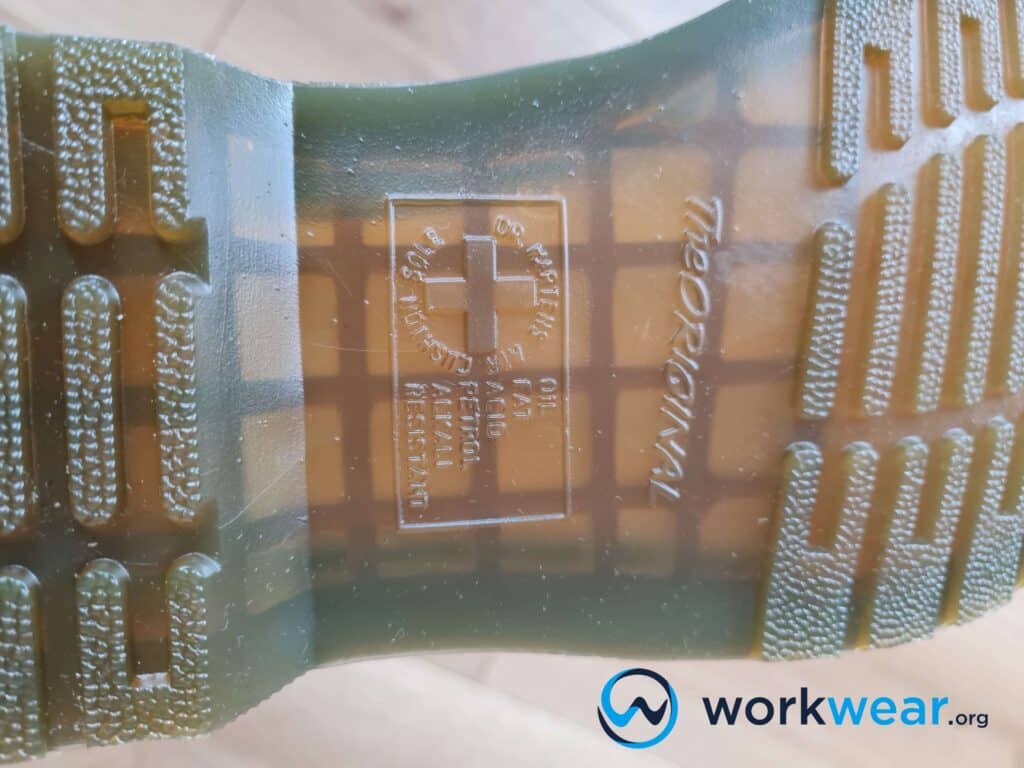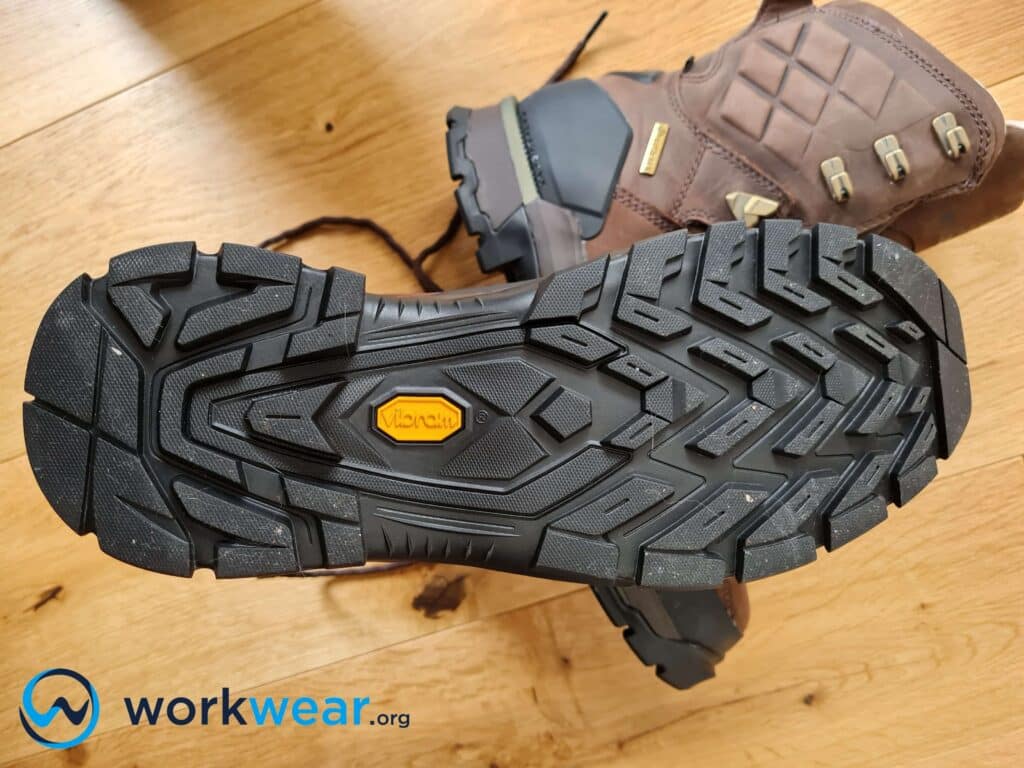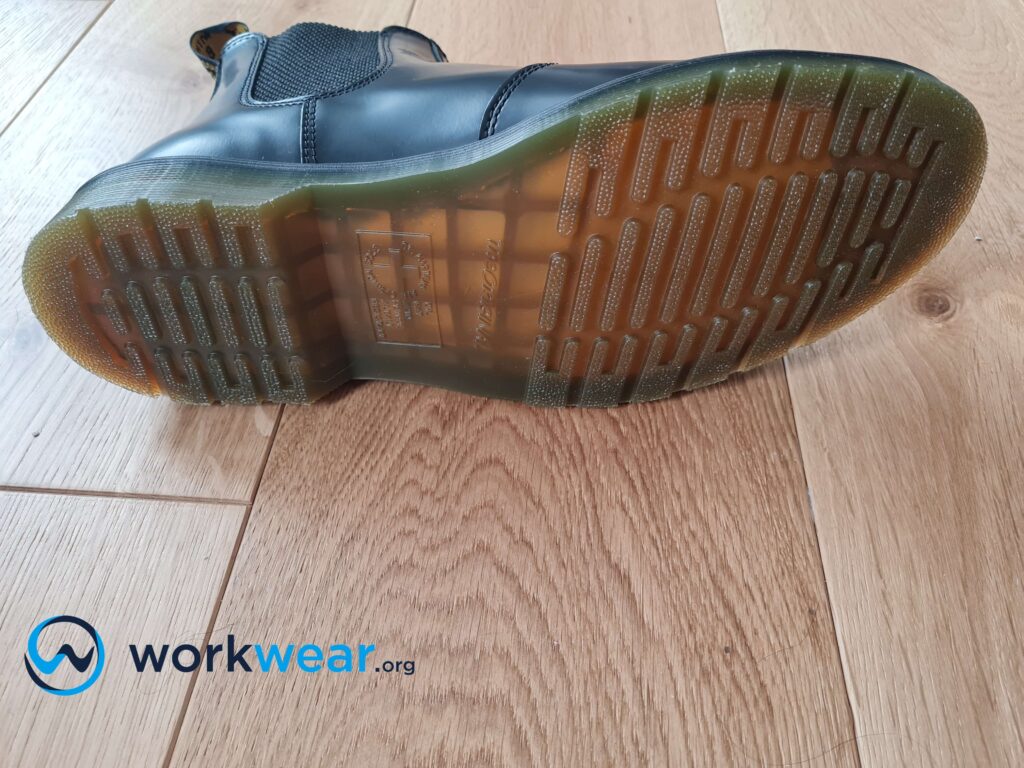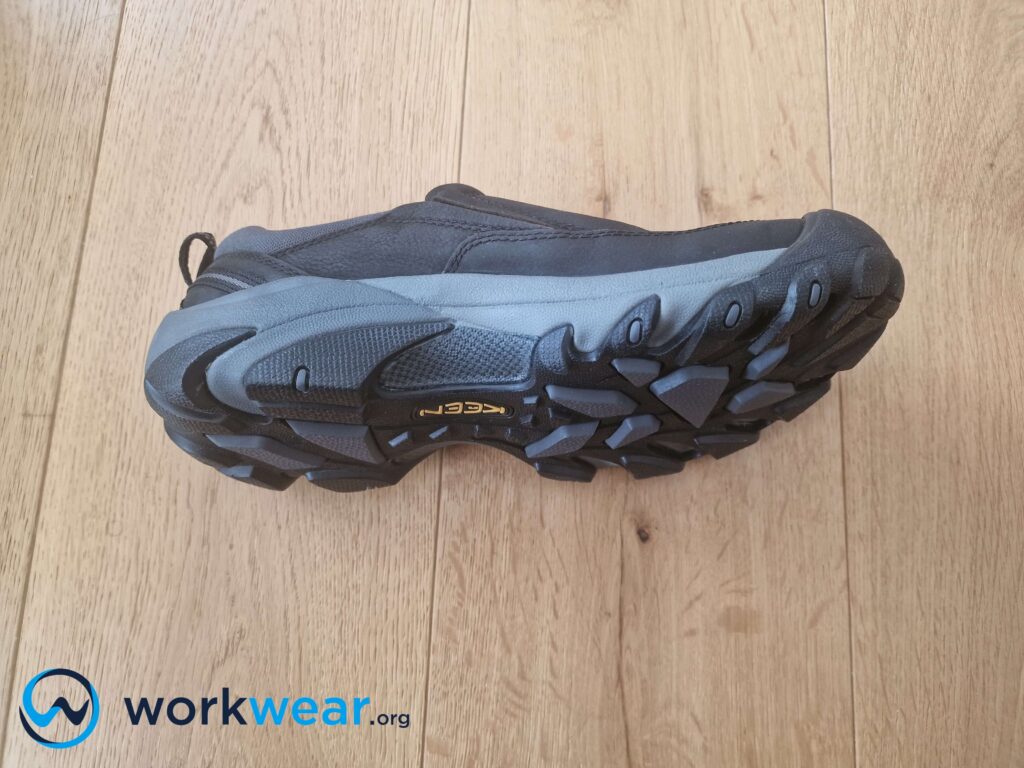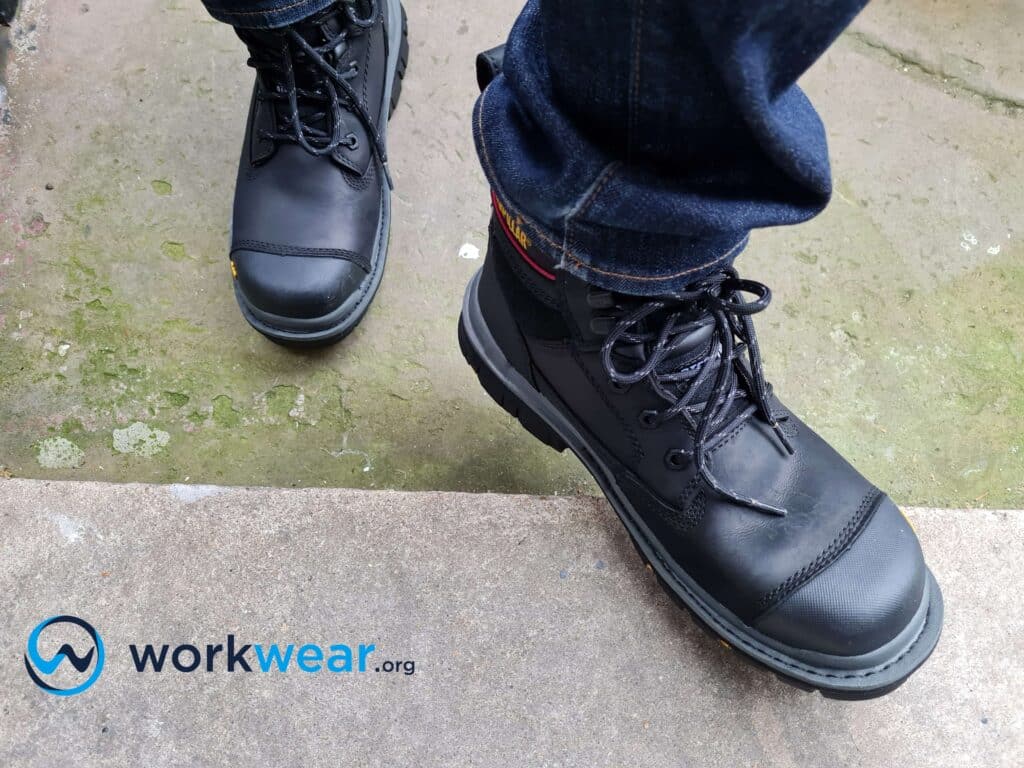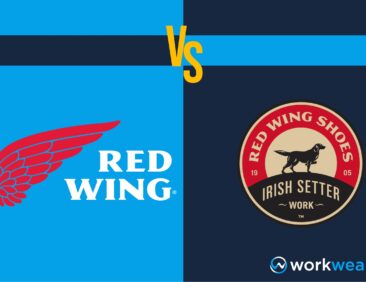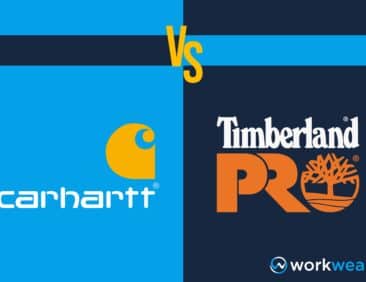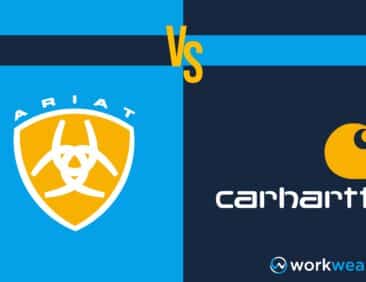Vibram vs. Rubber vs. EVA Soles
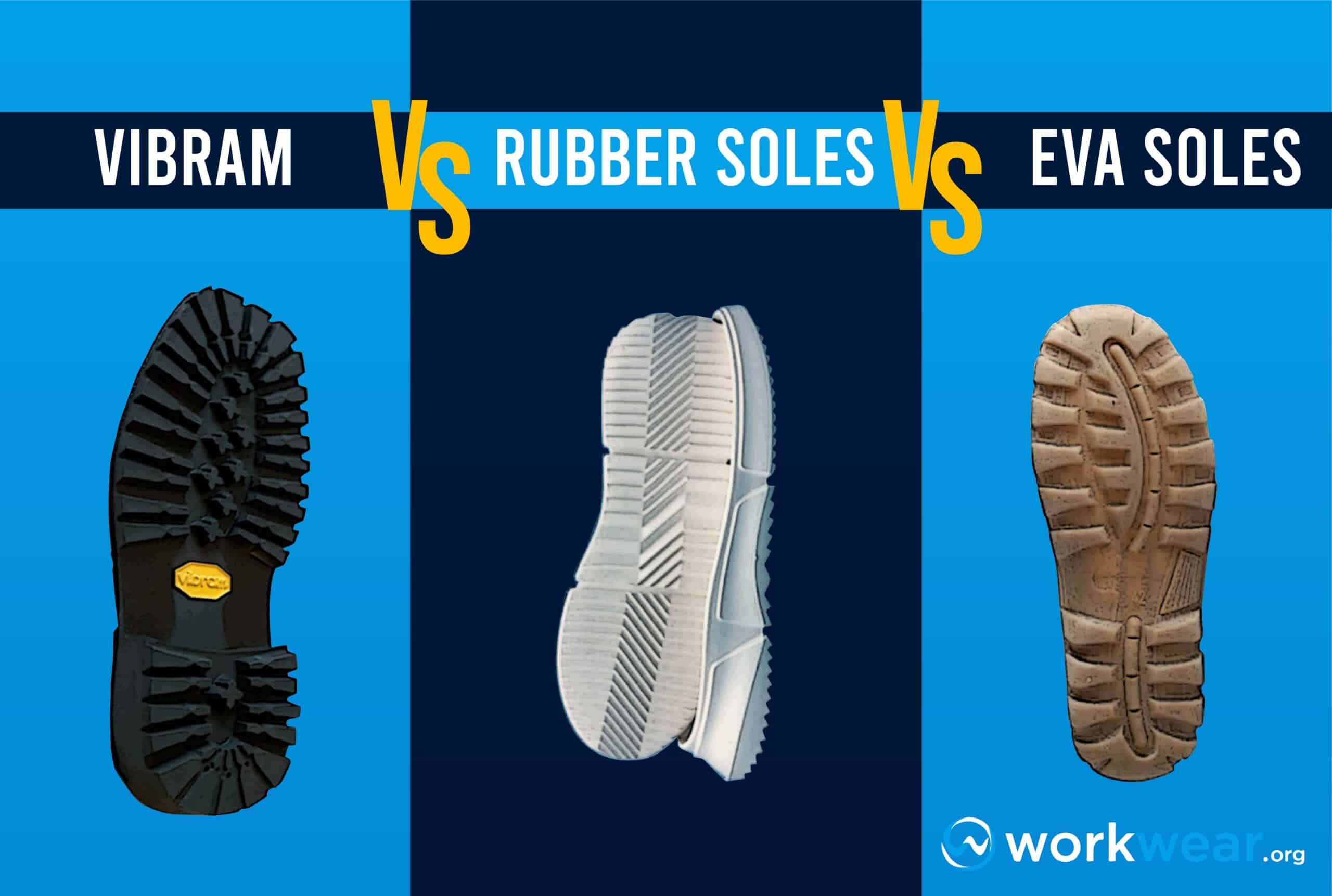
When choosing work boots or work shoes, it’s natural to focus mainly on their upper materials and designs – and forget that soles also need to be considered. Different types of soles are used in work footwear, but choosing among the options can be quite confusing. If you’d like to know more about the common types of materials used for work footwear soles, we’re here to help you. After testing the 3 of the most common materials – rubber, EVA, and Vibram – used to build the soles of work boots and shoes, we’ve made the following observations regarding the materials’ similarities and differences.
Main Similarities
Flexibility
EVA, Vibram, and rubber soles are all flexible to some degree. EVA is the most flexible among the three materials for work footwear soles. This material is also used in midsoles because of its flexibility and cushioning properties. Work boots and shoes with EVA soles are easy to move in because they don’t feel stiff. Meanwhile, Vibram and rubber soles are also flexible. Typically, these rubber soles don’t need to be broken in to make them flexible enough for comfortable use. It’s worth noting that the flexibility of Vibram and rubber soles is significantly affected by their thickness or height. Sole designs that are extremely thick often don’t flex as easily as those with thinner structures. They can make walking difficult because the stiffness can hinder the feet’ natural movement.
Winner: Vibram, EVA, and rubber soles all win regarding flexibility. Their levels of flexibility are affected by how they’re designed, especially with the treads’ thickness and depth or size.
Shock Absorption
Rubber, Vibram, and EVA all have shock-absorbing properties. Soles made from these materials are designed to soak up the impact resulting from continuous walking. The shock is then dispersed to prevent the development of fatigue. This results in a comfortable feeling even while walking for extended periods.
Winner: EVA, rubber, and Vibram soles share the top spot for shock absorption. They help stop foot fatigue by soaking up and dissipating shock caused by hours of walking or standing on hard ground.
Water Resistance
Rubber, Vibram, and EVA are all waterproof. These materials create waterproof soles that don’t allow liquids to be absorbed. Strong water resistance protects the feet from soaking while walking or wading on wet or muddy surfaces. This quality also prevents damage caused by liquid absorption, especially with hours of exposure to wet elements.
Winner: Rubber, EVA, and Vibram are all winners for water resistance. These waterproof materials can keep the feet comfortably dry while working in wet environments.
Main Differences
Traction
Vibram is made with a type of material, so it has quite a few similarities to rubber. One is a strong grip to maintain stability over different ground conditions. Vibram and rubber soles have high-traction designs that help improve safety while navigating tricky surfaces. These materials firmly grip the ground to prevent slipping, making them suitable for wet, muddy, unstable, or slippery ground conditions. Specific types of Vibram soles showcase an aggressive tread pattern, delivering enhanced traction for increased walking stability. The same applies to rubber soles with lugged patterns that feel grippy on most surfaces.
On the other hand, EVA soles have considerably less grip than Vibram or rubber. EVA’s softness and flexibility tend to compromise traction. This synthetic material’s lower level of traction makes it ideal for footwear for use on non-challenging surfaces, such as those in indoor work areas.
Winner: Vibram and rubber soles win when it comes to traction. They both have exceptional grip on different surfaces, especially if their designs feature large treads.
Durability
Vibram and rubber soles are durable. These soles are made from resilient rubber and rubber compounds, so they don’t deteriorate easily even with heavy use. Thick rubber and Vibram soles are often fitted into work boots with heavy-duty designs. These materials are also used to make more low-key sole designs for more streamlined work boots and shoes, although these options may not be as durable as the more aggressive-looking sole options. Rubber and Vibram materials don’t wear out that easily so that they can be depended on for lasting performance. Vibram soles, in particular, are designed to be exceptionally strong and long-lasting, so they’re often seen in hiking boots and footwear for jobs requiring hours of walking.
EVA soles, on the other hand, don’t match the strength and durability of Vibram and rubber. They typically have lightweight, flexible structures that are more comfortable to use. However, the flexibility and minimized weight compromised overall durability, resulting in soles that are less resistant to damage.
Winner: Vibram soles win in the durability department. They’re made with rubber compounds designed to resist structural deterioration for long, offering long-lasting performance in different work environments.
Weight
Rubber and Vibram soles are typically heavier than those made with EVA. It should be noted, though, that weight will also be affected by the soles’ thickness. The size of the treads also has an impact on the soles’ weight. Thick soles with large treads are often made with Vibram or rubber materials. These designs are uncommon in EVA soles, which tend to be much thinner and have more lightweight structures.
EVA soles are usually seen in low-profile work footwear, such as those with athletic profiles that look like sneakers. The reduced weight makes work boots and shoes more comfortable for long periods. This is because EVA soles are not bulky and don’t weigh the feet down.
Winner: EVA soles stand out with lightweight profiles that make work footwear more comfortable. They typically weigh much less than bulkier Vibram or rubber soles that tend to be uncomfortable when dragging on the feet after hours of footwear use.
Comparison Table
| Vibram | Rubber | EVA | |
| Flexibility | Flexible | Flexible | Flexible |
| Shock Absorption | Shock-absorbent | Shock-absorbent | Shock-absorbent |
| Water Resistance | Waterproof | Waterproof | Waterproof |
| Traction | Strong | Strong | Weak |
| Durability | Durable | Durable | Less resilient |
| Weight | Typically, heavy | Typically, heavy | Lightweight |
Who’s the Overall Winner?
When it comes to overall performance, Vibram and rubber soles emerge as the winners in this comparison. They’re more damage-resistant and have higher traction levels than EVA. However, they also tend to feel bulkier, which can compromise comfort. EVA soles may not be as grippy or durable as rubber and Vibram but they’re more lightweight, making work boots and shoes more comfortable to use over long periods of standing.
Recap
Pick Vibram soles if you:
- Need extra-grippy outsoles
- Work in challenging conditions
- Prefer durable footwear materials
Choose rubber soles for:
- Strong water resistance
- Long-lasting performance
- Strong traction
Go for EVA soles to:
- Allow the feet to flex comfortably and naturally
- Avoid bulky footwear
- Enjoy reliable shock absorption
Personal Testing Experience
These are our experiences while testing out work boots with Vibram, rubber, and EVA soles. The Ariat Catalyst VX Defiant Gore-Tex Insulated Boot was equipped with a Vibram outsole, delivering excellent traction for enhanced stability on tricky surfaces. It used GORE-TEX waterproofing that effectively blocked liquids in wet surroundings. With 400 grams of insulation, this boot remained comfortably warm in cold settings. However, it started to weigh the foot down after hours of use. The Caterpillar Gravel Boot had a high-traction rubber outsole gripped surfaces strongly, significantly reducing the risk of slipping in the work area. Its heavy-duty design kept up with challenging conditions and didn’t break apart even with heavy use. Surprisingly, this was a very comfortable boot, even with steel toe caps that protected the toes against dangerous impact and compression. It was a bit heavy, though, and wasn’t waterproof. The Rockport Storm Surge Boot had an EVA outsole that, unexpectedly, felt grippy enough to stabilize our steps over wet surfaces. The waterproof leather and seam-sealed design didn’t allow liquids to enter, maintaining a completely dry interior for much longer. This boot had a lightweight structure that made walking for hours much more comfortable, with a shock-absorbing heel helping with fatigue prevention. We noted that the laces were quite thin and didn’t feel as sturdy as thicker options.
Conclusion
Different materials for work footwear outsoles have their own sets of strengths and drawbacks. In this comparison, we determined that Vibram and rubber soles outperformed EVA in terms of overall performance with superior traction and durability. On the other hand, EVA outsoles are more suitable for non-harsh environments. Their lightweight, flexible structures help make work boots and shoes more comfortable to wear over extended periods of walking.
FAQ's
- Do Vibram soles always have excellent traction?
- Not always. Vibram has some mini-lug sole designs that don’t have outstanding traction and are suitable for non-tricky surfaces.
- What makes rubber soles unsuitable for cold conditions?
- Rubber outsoles tend to become stiff in cold conditions, so walking can be more difficult.
- Why are EVA soles lightweight?
- EVA soles are made with thousands of tiny bubbles forming an airy structure, so they don’t weigh as much as rubber soles with packed, solid structures.
- Are rubber soles always heavy?
- It depends on their design. The ones with thick structures and large treads usually weigh more than the thin ones with shallow lugs.

